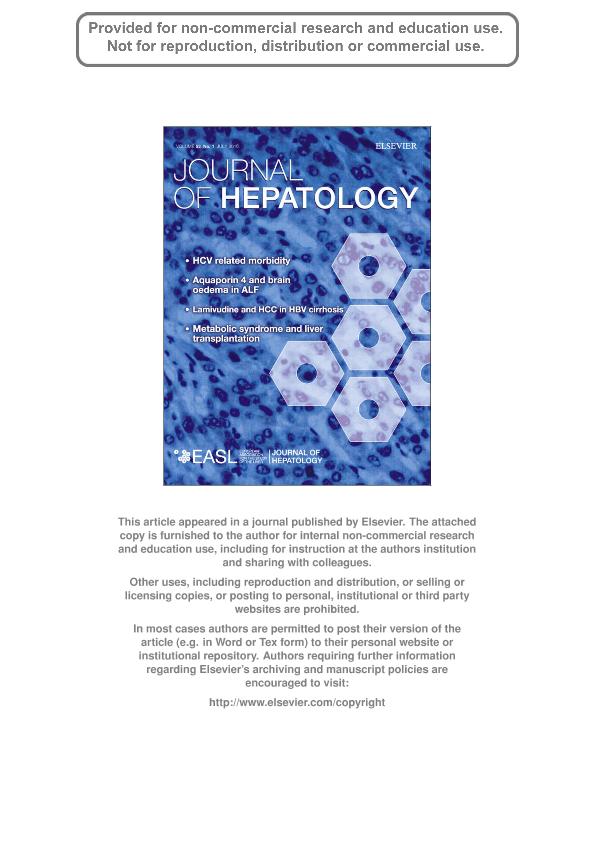Artículo
Brucella-infected hepatocytes mediate potentially tissue-damaging immune responses
Delpino, María Victoria ; Barrionuevo, Paula
; Barrionuevo, Paula ; Scian, Romina
; Scian, Romina ; Fossati, Carlos Alberto
; Fossati, Carlos Alberto ; Baldi, Pablo Cesar
; Baldi, Pablo Cesar
 ; Barrionuevo, Paula
; Barrionuevo, Paula ; Scian, Romina
; Scian, Romina ; Fossati, Carlos Alberto
; Fossati, Carlos Alberto ; Baldi, Pablo Cesar
; Baldi, Pablo Cesar
Fecha de publicación:
07/2010
Editorial:
Elsevier Science
Revista:
Journal of Hepatology
ISSN:
0168-8278
Idioma:
Inglés
Tipo de recurso:
Artículo publicado
Clasificación temática:
Resumen
Background & Aims: Hepatic involvement is frequent in human brucellosis. While different histopathological lesions have been reported in these patients, the underlying cellular and molecular mechanisms have not been addressed. Methods: This study assessed whether Brucella abortus can infect a human hepatoma cell line and induce a proinflammatory response in these cells. Results: The bacterium not only infected the human hepatoma cell line HepG2 but also exhibited intracellular replication. The infection induced hepatoma cells to secrete IL-8, and supernatants from Brucella-infected hepatoma cells were shown to induce the migration of human neutrophils. The infection also induced the expression of the intercellular adhesion molecule ICAM-1 on hepatoma cells, and the adhesion of neutrophils to these cells was significantly higher than to uninfected hepatoma cells. ICAM-1 expression was also induced by stimulation of hepatoma cells with supernatants from Brucella-infected neutrophils. While Brucella infection did not induce the expression of matrix metalloproteinases (MMPs) in hepatoma cells, it significantly induced MMP-9 in neutrophils. Hepatoma cell apoptosis was significantly induced by B. abortus infection and also by stimulation with supernatants from Brucella-infected neutrophils. Conclusions: The present study provides clues regarding potential mechanisms of tissue damage during liver brucellosis.
Archivos asociados
Licencia
Identificadores
Colecciones
Articulos(IDEHU)
Articulos de INST.DE EST.DE LA INMUNIDAD HUMORAL PROF.R.A.MARGNI
Articulos de INST.DE EST.DE LA INMUNIDAD HUMORAL PROF.R.A.MARGNI
Articulos(INIGEM)
Articulos de INSTITUTO DE INMUNOLOGIA, GENETICA Y METABOLISMO
Articulos de INSTITUTO DE INMUNOLOGIA, GENETICA Y METABOLISMO
Citación
Delpino, María Victoria; Barrionuevo, Paula; Scian, Romina; Fossati, Carlos Alberto; Baldi, Pablo Cesar; Brucella-infected hepatocytes mediate potentially tissue-damaging immune responses; Elsevier Science; Journal of Hepatology; 53; 1; 7-2010; 145-154
Compartir
Altmétricas



